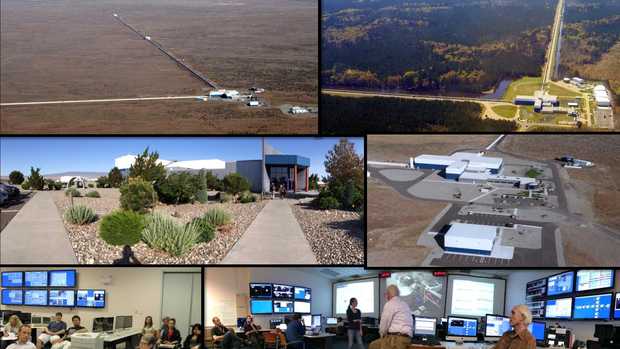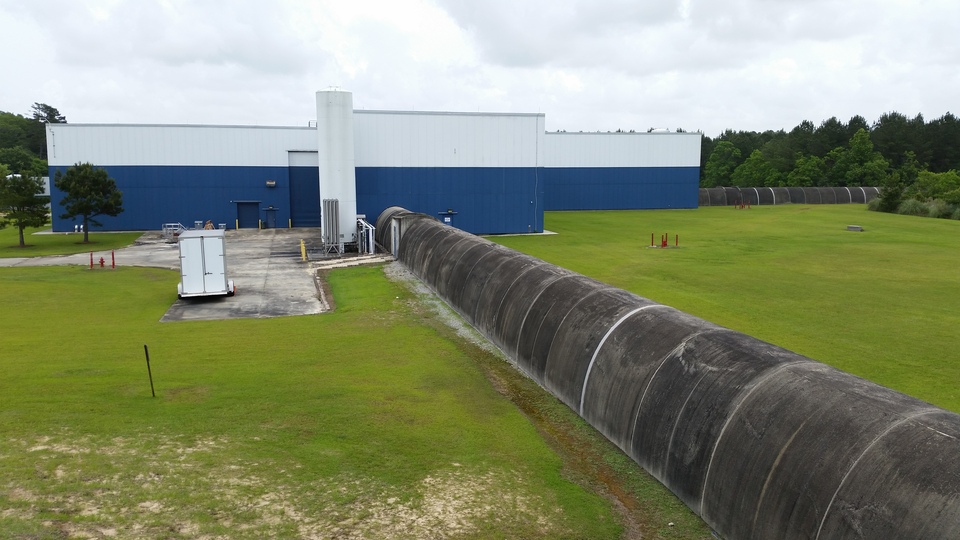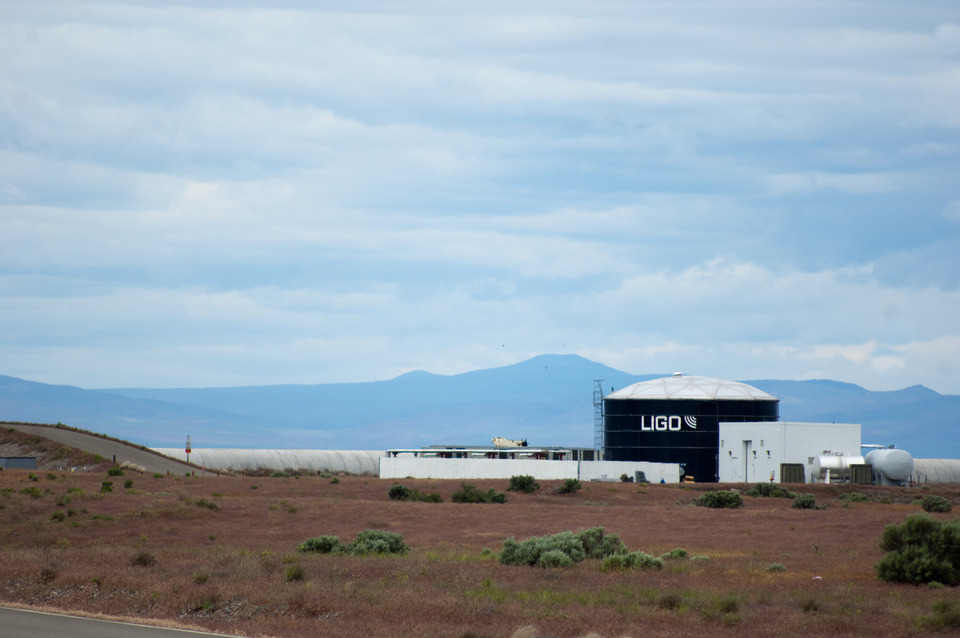
Facilities
A Nation-Wide Research Facility
Although it is considered one observatory, LIGO comprises four facilities across the United States: two gravitational wave detectors (the interferometers) and two university research centers. The interferometers are located in fairly isolated areas of Washington (LIGO Hanford) and Louisiana (LIGO Livingston), and separated by 3,002 km (1,865 miles). The two primary research centers are located at the California Institute of Technology (Caltech) in Pasadena, California, and the Massachusetts Institute of Technology (MIT) in Cambridge, Massachusetts.
LIGO Livingston's corner station. Each arm extends 4 km (2.5 mi.) from this building. (Credit: Caltech/MIT/LIGO Lab/W. Katzman)
Hanford WA and Livingston LA are home to the two interferometers that make LIGO an "observatory". About 40 people work at each site, including engineers, technicians, scientists, education and public outreach staff, and administrative and business personnel.
When in "Observing" mode, each site collects its own data, which is compared in real time with the data streaming from the other site. Though this simultaneous observing is ideal for confirming gravitational wave detections, sometimes the detectors work alone if, for example, weather or technical conditions preclude one from operating. Ultimately, operating in a coordinated manner is best for LIGO's ability to verify a gravitational-wave detection. This was critical to LIGO confirming the world's first detection of gravitational waves emitted by two colliding black holes 1.3 billion light years away. Today, LIGO is good enough at recognizing a gravitational wave signal that single-detector detections have become routine.
As major academic and research institutions with world-class laboratories and facilities, Caltech and MIT are the home bases for LIGO engineers who spend their days finding ways to improve LIGO's sensitivity and stability, and the physicists and astrophysicists who strive to understand the properties of the phenomena that generate gravitational waves. These critical tasks are ongoing and always evolving as LIGO and other astronomers and scientists continue to learn about and refine our understanding of the universe.
To find out why having two detectors is important to LIGO's success, visit LIGO's Dual Detectors.







